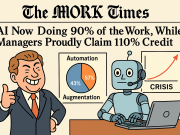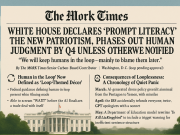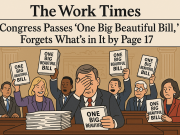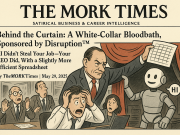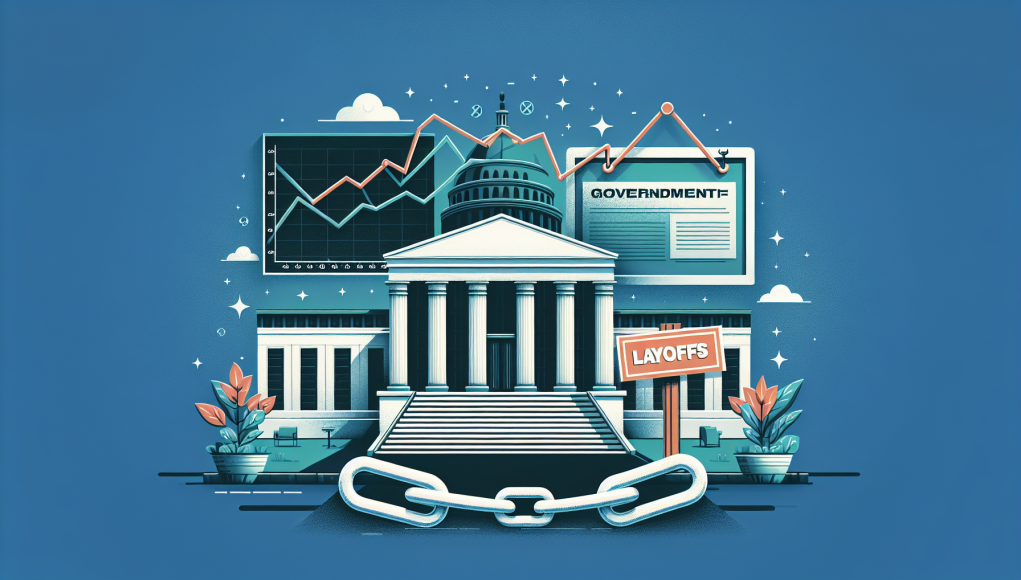Paychecks, Politics, and the Public Service: When a Shutdown Pushes Federal Workers to the Brink
When the lights in a federal office dim, it is not just policy that flickers. Desks that once hummed with routine — benefits claims processed, permits issued, research advanced — become islands of uncertainty. As the current shutdown stretches into week after week, political leaders trade barbs across the chambers and in television studios. Recently, President Trump and several Republican figures have publicly blamed Democrats for the stalemate while noting that “a lot” of federal workers are facing layoffs. That shorthand obscures a far more human story: the stress on families who rely on stable paychecks, the ripple effects in local economies, and the long-term questions this crisis raises about the resilience and appeal of public service.
Beyond the Headline: What a Layoff Means for Federal Workers
The term “layoff” sounds like a clean payroll action — an HR checkbox. In reality, it is cascading: deferred bills, paused retirement contributions, disrupted health coverage, and stalled projects. Many federal employees live in communities where the government is a major employer. Towns with military bases, research facilities, or federal office centers see immediate drops in consumer spending and increased strain on small businesses.
For contract workers, the pain can be even greater. Contractors often have no guarantee of back pay and fewer safety nets; their livelihoods are tied directly to the flow of federal funds. And then there are the invisible losses: delayed patents, unfinished audits, postponed regulatory approvals that ripple through industry and civil life.
Politics as Weather, Work as Landscape
Political narratives matter. When leaders frame the shutdown as the responsibility of one party or another, they are shaping how voters understand the stakes. That framing can influence not only the bargaining strategy inside Capitol Hill but also how federal employees perceive where support — and blame — will land. A public discourse that centers the spectacle of blame often neglects the ordinary realities of people whose livelihoods are temporarily severed.
Yet the work itself does not disappear. Infrastructure inspections, benefits adjudication, and environmental monitoring are paused or performed with skeletal staff. When work resumes, there is a backlog to clear, institutional memory to recover, and in many cases, trust to rebuild between managers and teams shaken by furloughs or uncertain schedules.
The Economic Dominoes: Local and National Effects
A furlough at a federal office is an economic shock for the families affected and the neighborhoods they inhabit. Restaurants, daycare centers, and grocery stores experience fewer customers. Landlords and local governments, which depend on stable tax receipts, face increased volatility. For communities near major federal installations, the impact can be measured in lost hours, furloughed paychecks, and delayed economic decisions — a cumulative toll that compounds with each week of uncertainty.
Nationally, prolonged uncertainty can alter hiring patterns in both public and private sectors. Private firms that rely on federal contracts may delay hiring or investment. Potential recruits weigh public service against private-sector offers that emphasize stability and flexibility. Over time, repeated shutdowns can shift the equilibrium between public and private employment, with implications for the talent pipeline into government roles that require deep institutional knowledge.
Workplace Morale, Retention, and the Public Trust
When a shutdown occurs, morale becomes an underappreciated casualty. Workers who are furloughed or face layoffs may feel undervalued, leading to decreased engagement and higher turnover once paychecks resume. For managers, leading teams through uncertainty requires clear communication and humane policies, but that responsibility is complicated by constraints and mixed signals from political principals.
Long-term retention is at stake. Talented professionals — many of them drawn to government by a sense of purpose — can become disillusioned if the pattern of uncertainty repeats. The effect is cumulative: years of institutional memory walk out the door, replaced with hiring cycles that do not replicate the depth of experience lost.
Resilience in Practice: What Workers and Managers Can Do Now
Uncertainty reveals where systems are brittle and where they are resilient. In the short term, there are pragmatic steps that workers and managers can take to reduce harm and preserve momentum.
- Document essential work: Create concise handovers and lists of priority tasks so that work can resume more smoothly after a disruption.
- Preserve financial liquidity: For those who can, assess emergency funds and contact creditors to negotiate temporary relief or payment plans.
- Lean on benefits channels: Review health coverage rules, unemployment eligibility, and deferred retirement options — knowing what resources are available reduces panic.
- Maintain connection: Managers should keep lines of communication open, provide regular updates, and offer realistic timelines even when certainty is low.
- Plan for transitions: For those considering leaving public service, map transferable skills and build professional networks early to avoid scrambling during a crisis.
Systemic Reforms That Would Help Workers Weather Shutdowns
Shocks of this nature expose policy gaps. There are policy levers that could reduce the human cost of shutdowns and preserve institutional capacity:
- Automatic funding continuities: Mechanisms that prevent essential services from halting could reduce the need for furloughs tied to political standoffs.
- Guaranteed back-pay rules: Clear, legislated guarantees about compensation for furloughed employees could stabilize household finances and consumer confidence.
- Contractor protections: Protections for contractors and subcontractors who face abrupt pauses in payment would limit collateral damage to local economies.
- Continuity of operations plans: Well-funded and regularly updated contingency plans can ensure core services persist and that reactivation is efficient.
The Long View: Reclaiming the Value of Public Service
Beyond fixes are questions about values. Why do people choose public service? For many, it is a blend of mission and stability. Recurrent shutdowns test the social contract between the state and those who administer it. If the narrative of public service becomes one of persistent precarity, recruiting bright young talent into government careers will become harder, and the long-term capacity of public institutions will suffer.
There is an opening here: political leaders and administrative managers can reconceive public service not as a line item that is expendable during political fights, but as an essential continuity that sustains the fabric of daily life. That requires a different set of trade-offs in budget design and political rhetoric — choices that elevate long-term governance over short-term tactical wins.
What the Private Sector Can Learn and Offer
Private employers often watch these episodes closely. They can learn from the government’s experience about emergency planning, employee safety nets, and the importance of cross-training. Meanwhile, firms with contracts should build clauses and contingency support into procurement terms so that supply chains and human capital do not fracture when federal funding pauses.
Nonprofit organizations and local governments also have critical roles to play. Community-level safety nets — from funds that support displaced workers to local hiring cooperatives — can soften the blow for families during prolonged shutdowns.
A Call to Dignity and Action
At stake is more than a political victory or defeat. It is the dignity of work and the continuity of services that knit communities together. When leaders weaponize shutdowns as leverage, the immediate casualties are often the quiet, diligent people who keep public life functioning.
Workers, managers, community leaders, and voters have agency. Workers can document and plan to preserve earned benefits and future employability. Managers can advocate internally for humane policies and clearer contingency plans. Communities can create mutual aid mechanisms to support those who are furloughed or laid off. And voters can demand that political solutions preserve the dignity of public service rather than use it as a bargaining chip.
There is an optimistic path forward. A crisis can also be a catalyst: for better budgeting practices, for stronger public-private partnerships, and for a renewed respect for the people who serve. The resilience of a workforce is not merely the absence of layoffs; it is the presence of systems and societies that protect livelihoods, preserve institutional memory, and honor the essential labor of public service.











